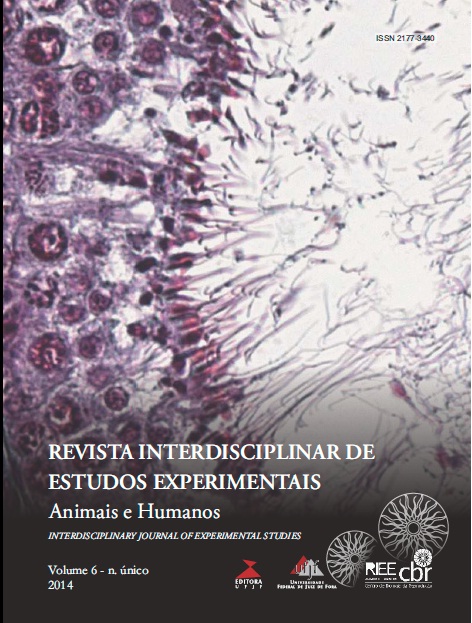Effect of thalidomide on the inflammatory process and demyelination in experimental autoimmune encephalomyelitis: histopathologic study and expression of TNF-α e iNOS
Keywords:
EAE, Thalidomide, TNF-α, iNOS, demyelination.Abstract
Experimental autoimmune encephalomyelitis is a inflammatory and demyelinating disease of central nervous system (CNS) characterized by permanents or temporary disabilities. Its pathogenesis involves autoimmune reaction associated with the production of pro inflammatory cytokines such as tumor necrosis factor alpha (TNF-α). This cytokine is associated with increase of reactive oxygen free radicals, such as nitric oxide, released by activated immune cells. Besides enhancing inflammation, both tumor necrosis factor as nitric oxide cause pathologically direct destruction of proteins and enzyme oxidation. This study focuses on clinical disease progression, development of the inflammatory reaction and evaluation axonal myelination . The “ in situ” tissue expression of the TNF-α and inducible nitric oxide synthase iNOS ,an enzyme associated with the production of nitric oxide , were also investigated in CNS samples obtained during the development of experimental autoimmune encephalomyelitis model in Lewis rats. Methods: Lewis rats were used to perform the classical model of EAE. The rats ( n=30) were divided into the healthy control group (I), experimental autoimmune encephalomyelitis group (II) and thalidomide treated group (III). The rats were monitored for 15 days for determination of clinical score , after this period , the animals were euthanized and samples were obtained from the central nervous system in which histopatological study and immunohistochemistry for SNC in situ detection of TNF-α and inducible nitric oxide synthase (iNOS) were performed. Results: All animals of group II had symptoms related to experimental encephalomyelitis , while only one of the thalidomide treated group showed clinical changes. The histopatological study revealead that SNC samples of group II presented areas of intense focal and diffuse mononuclear inflammation and the myelin sheaths were scarce and poorly stained. However, thalidomide treated rats presented occasionally a mild perivascular inflammatory infiltrate and myelin sheaths were organized and well evidenced. In addition, the expression of TNF-α and iNOS were significantly higher in the group II when compared with thalidomide treated group. Conclusions: The results taken together support the hypothesis that thalidomide inhibits the intensity of the inflammation and demyelination process and as well as reduces the production of inflammatory mediators influencing the development of experimental autoimmune encephalomyelitis in Lewis rats.
Downloads
Downloads
Published
Issue
Section
License
Autores que publicam nesta revista concordam com os seguintes termos:- Autores mantém os direitos autorais e concedem à revista o direito de primeira publicação, com o trabalho simultaneamente licenciado sob a Creative Commons Attribution License que permitindo o compartilhamento do trabalho com reconhecimento da autoria do trabalho e publicação inicial nesta revista.
- Autores têm permissão e são estimulados a citar e distribuir seu trabalho (ex.: em repositórios institucionais, página pessoal, trabalhos científicos, etc) desde que citada a fonte (referência), já que isso pode gerar produtividade para os autores, bem como aumentar o impacto e a citação do trabalho publicado.

